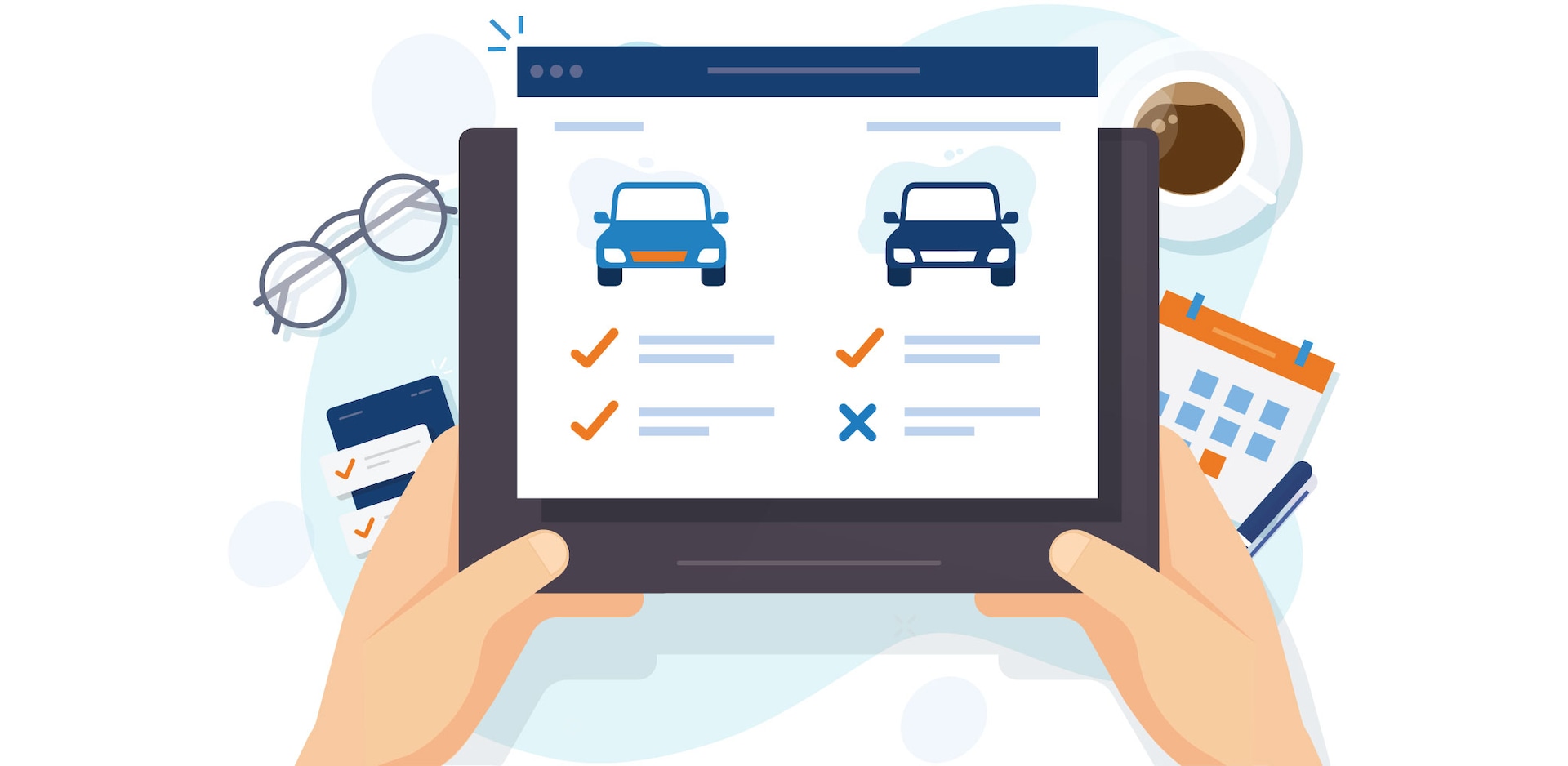Online Car Buying Vs Dealership Purchase
Picture navigating a car dealership with a steaming cup of coffee in one hand while a Hustle and bustle surrounds you—a once quintessential part of car buying now feels more like an episode of nostalgia. Today, the allure of clicking through vibrant images and in-depth product descriptions from the comfort of your couch attracts the modern consumer. With the surge in online platforms, this virtual convenience has reshaped how we think about purchasing cars.
The traditional dealership experience, steeped in face-to-face negotiation and test drives, still holds its appeal for those who prioritize tactile engagement. Yet, a fascinating 2021 report highlights that nearly 30% of car buyers have completed their purchases online, a massive leap from prior years. This shift reveals both a change in consumer confidence in digital avenues and a broader acceptance of digital-first lifestyles, thanks to the tailored experience and time efficiency of online platforms.

Online car buying: A revolutionary shift
The digital age brought immense changes, including how we buy cars. Online car buying, once a novelty, is now mainstream. Imagine browsing thousands of vehicles without leaving your home. Convenience and a vast selection are significant advantages. It’s no wonder more people are turning to online platforms.
It’s not just about convenience; it’s also about transparency. Online platforms provide detailed car histories, user reviews, and price comparisons. This information empowers buyers, making them feel more confident in their choices. The entire process, from selection to financing, can be handled online. It’s simplified the car buying experience immensely.
The rise of online car buying also led to competitive pricing. With the ability to compare prices from multiple sellers, buyers often get better deals. Additionally, many platforms offer virtual tours and 360-degree views of vehicles. This immersive experience brings the showroom to your living room. It’s a game-changer for car shopping.
However, online car buying isn’t without its challenges. Potential buyers can’t test drive the car before purchasing. This lack of physical interaction can be a drawback. Some people still prefer the traditional method for this reason. But, with return policies and guarantees becoming more common, even this hurdle is being addressed.
The rise of online auto markets
Online auto markets have transformed how we think about car shopping. These platforms make browsing for a new or used car easy and fast. No longer is a full day at a dealership needed. Websites and apps allow potential buyers to check a vast array of vehicles. It’s like having multiple dealerships at your fingertips.
Many factors contributed to this rise in popularity. The straightforward search functions let users filter by make, model, year, and price. Buyers can instantly compare similar cars across different sellers. This level of transparency was once unimaginable in car buying. It plays a pivotal role in building consumer trust.
There’s also a variety of tools available that aids buyers. Online calculators can show monthly payments and estimate trade-in values. Some platforms offer vehicle delivery services right to your doorstep. This convenience saves time and simplifies the process immensely. Online auto markets offer features that traditional methods can’t match.
Even car dealers see value in these digital markets. Listing their inventory online widens their reach to potential customers. This digital presence helps them stay competitive in a crowded market. More dealers are adopting this approach to adapt to changing buyer habits. The shift is shaping the future of car sales.
Purchasing at dealerships: The traditional approach
Walking into a car dealership has a unique charm and atmosphere. The bright lights highlight shiny cars lined up for potential buyers. There’s a certain excitement in touching, feeling, and even smelling a new car. Test drives allow buyers to experience the vehicle firsthand. This hands-on approach is what many customers appreciate.
Dealerships also offer personalized services that online platforms lack. A friendly salesperson can guide you through the buying process with ease. They answer questions and provide expert advice tailored to your needs. Sometimes, they can negotiate deals or offer special promotions. This direct interaction is invaluable to many car buyers.
When it comes to financing, dealerships offer several options. Customers can discuss terms in person and understand the agreement’s finer details. This face-to-face interaction often makes people comfortable with their choices. Financial advisors in dealerships help streamline these decisions. Understanding the financial aspect becomes simpler with expert help.
However, the traditional dealership approach requires time and patience. It might involve visiting multiple locations to find the perfect car. Long waits and negotiations can sometimes be frustrating. Still, many people enjoy the personal touch and tangible experience dealerships provide. This method remains popular despite the rise of online buying.
Pros and Cons of online car buying
Online car buying offers several compelling advantages. Convenience tops the list, with buyers browsing at any time, from anywhere. This flexibility eliminates the need for multiple dealership visits. Purchasing online often provides a more relaxed shopping experience. There’s no pressure from salespeople or time constraints.
Price transparency is another significant benefit. Online platforms list prices clearly, allowing easy comparisons. Hidden fees are less common, giving buyers greater confidence in their purchase. Many sites also provide user reviews and detailed vehicle histories. These tools help buyers make informed decisions with minimal hassle.
Despite its benefits, online car buying has drawbacks. The inability to test drive a car before purchase is a common concern. There’s also the issue of not seeing the actual vehicle condition. Pictures might not always reflect reality. This lack of physical interaction can deter some buyers.
Potential buyers also face security concerns. Online transactions may pose risks like fraud or data theft. Not all platforms are equally safe or trustworthy. Buyers must research to ensure they’re dealing with reputable sources. It’s essential to safeguard personal and financial information during online purchases.
However, many platforms are addressing these issues. Some offer robust return policies and money-back guarantees. Others provide comprehensive vehicle inspection reports. A few even offer test drive options before finalizing the deal. These features help bridge the gap between online and traditional buying.
Pros and cons of a dealership purchase
Purchasing a car from a dealership offers several notable advantages. One big plus is the chance to see and test drive the car. Buyers can experience the vehicle’s handling and features firsthand. This in-person interaction provides a sense of assurance. It’s especially reassuring for those unsure of their exact needs.
Another benefit is the personalized service dealerships provide. A salesperson can answer questions, offer suggestions, and guide you through the process. They might also offer special deals or promotions. Financing options are often on-site, simplifying the purchase. This guidance can make buying a car less overwhelming.
However, there are drawbacks to consider with dealership purchases. High-pressure sales tactics can sometimes make buyers uncomfortable. Trying to negotiate the best deal can be stressful and time-consuming. There are often added fees that increase the final price. Such experiences might deter buyers or leave them unsatisfied.
Additionally, visiting multiple dealerships can be tiring. Customers may need to set aside a full day or two to explore all options. The time commitment is high, especially if a preferred car isn’t readily available. This process tends to be less convenient than online shopping. Flexibility is somewhat limited by dealership hours and locations.
Despite these challenges, many customers value the dealership experience. Direct interaction with experts and the ability to inspect vehicles are important. For some, it’s worth the extra time and effort to ensure satisfaction. The traditional approach suits those who prefer a tangible, interactive experience. It’s a trade-off between immersive buying and the digital convenience of online methods.
Frequently Asked Questions
Car buying is a significant decision and often leaves people with many questions. Whether you’re considering the convenience of online purchasing or the traditional dealership route, understanding the nuances can be valuable.
1. What are the main benefits of online car buying?
Online car buying offers incredible convenience, as you can browse and research from home. With access to multiple dealerships at once, comparing prices or features becomes much simpler and faster. Many platforms offer comprehensive vehicle reviews and histories. This helps you make informed decisions while avoiding the pressure of sales tactics.
Moreover, digital transactions can often reduce extra costs associated with in-person negotiations, leading to potential savings. Some online marketplaces also provide exclusive deals not available at physical locations. These benefits, combined with the flexibility of 24-hour access, make online car buying an attractive option for many.
2. How does a dealership purchase enhance the buying experience?
A dealership provides a hands-on experience, allowing you to interact directly with vehicles. Test drives give you the feel of the car, which online buying can’t. Sales experts in dealerships can offer personalized advice and recommendations. This assistance can be vital in making the right purchase decision.
Additionally, within the dealership, there are often financial experts available to help navigate complex purchase agreements. Access to trade-in evaluations and special promotions can also make the buying process rewarding. Such tangible interactions ensure buyers feel confident and satisfied with their choice.
3. Are there risks associated with online car buying?
While online buying offers many benefits, it comes with potential risks like fraud. Buyers may find it challenging to assess the actual condition of the car. Without a physical inspection, what appears perfect in pictures might differ in reality. Being unable to test drive before purchase is another concern for many.
However, reputable online platforms often provide vehicle warranties, return policies, and detailed reports to address these concerns. Doing thorough research and verifying online reviews can also mitigate risks. It’s crucial to choose established platforms to ensure secure transactions and genuine deals.
4. Can dealership purchases lead to unexpected costs?
Dealership transactions sometimes involve hidden fees, adding to the final purchase price. Costs for documentation, delivery, and additional services are examples. High-pressure sales tactics can push buyers into unnecessary extras. That’s why it’s essential to read all contract details thoroughly.
Despite this, informed buyers can negotiate and clarify charges to avoid surprises. Asking for a breakdown of costs and understanding each fee’s purpose can help. A proactive approach with clear questions gives buyers more control over their financial commitments.
5. How has technology improved the traditional dealership experience?
Technology has enhanced dealership visits by streamlining processes like paperwork and financing. Many dealerships now offer online appointment scheduling, reducing wait times. Virtual tours and digital brochures provide detailed insights about available vehicles. This modern touch enriches the overall customer experience.
Furthermore, interactive kiosks and digital displays create an engaging environment for potential buyers. Technological advancements ensure that information is readily accessible and transactions more efficient. It’s a blend of tradition with the benefits of technology, creating a more efficient and enjoyable experience for buyers.
Final Thoughts
Both online car buying and dealership purchases offer unique advantages tailored to different preferences. Online platforms provide unmatched convenience and transparency, perfect for those who prioritize ease and efficiency. Meanwhile, traditional dealerships offer a tactile and personalized experience. This direct interaction remains invaluable for many buyers.
Ultimately, the choice depends on your individual needs and comfort level. Understanding the pros and cons of each option can help you make an informed decision. Whichever route you choose, being well-prepared will enhance your car-buying journey. Knowledge truly is power in this evolving marketplace.

